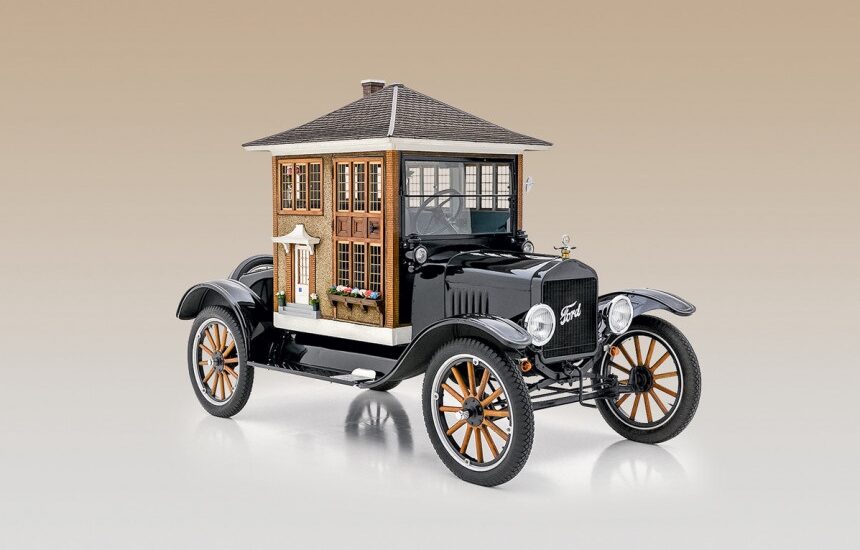What a delight! It’s as if someone whimsically decided to place a dollhouse atop a Ford chassis. Typically, such large toys boast intricately detailed interiors, replete with an assortment of doll furniture and accessories. However, this one conceals a simple two-seater cabin inside. So, what exactly are we looking at?
Decades ago, a Lithuanian book titled “Riedantys Namai” (Rolling Homes in English) was published. This lavishly illustrated volume recounted the tales of individuals who transformed decommissioned buses and trucks into mobile homes and their so-called “creations.” A few of these illustrations even graced the pages of AutorReview, though not the Ford T featured here.
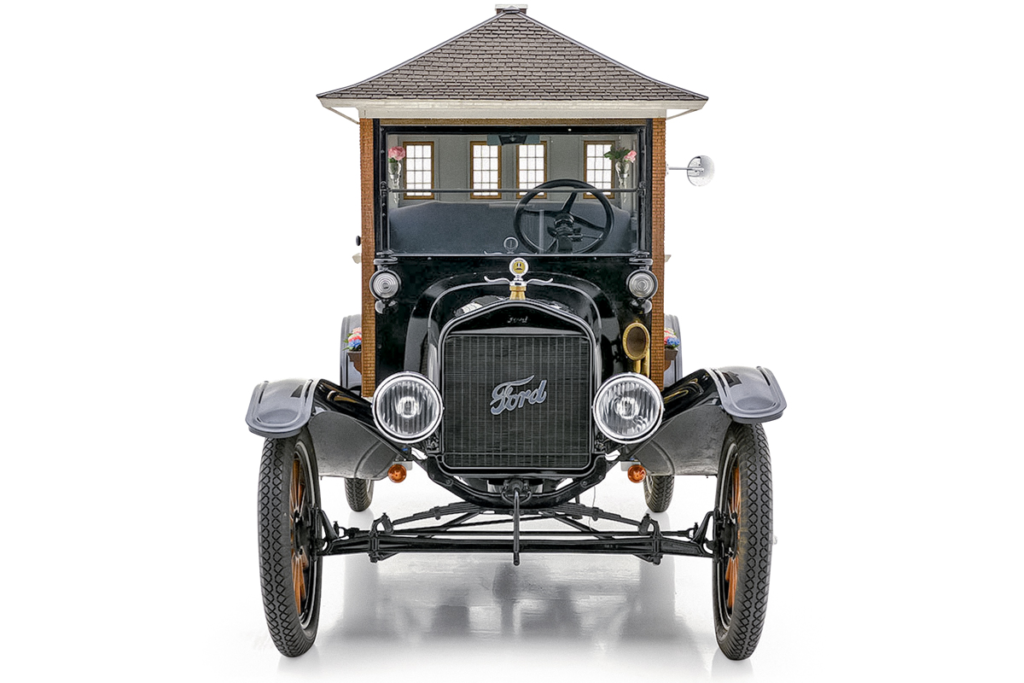
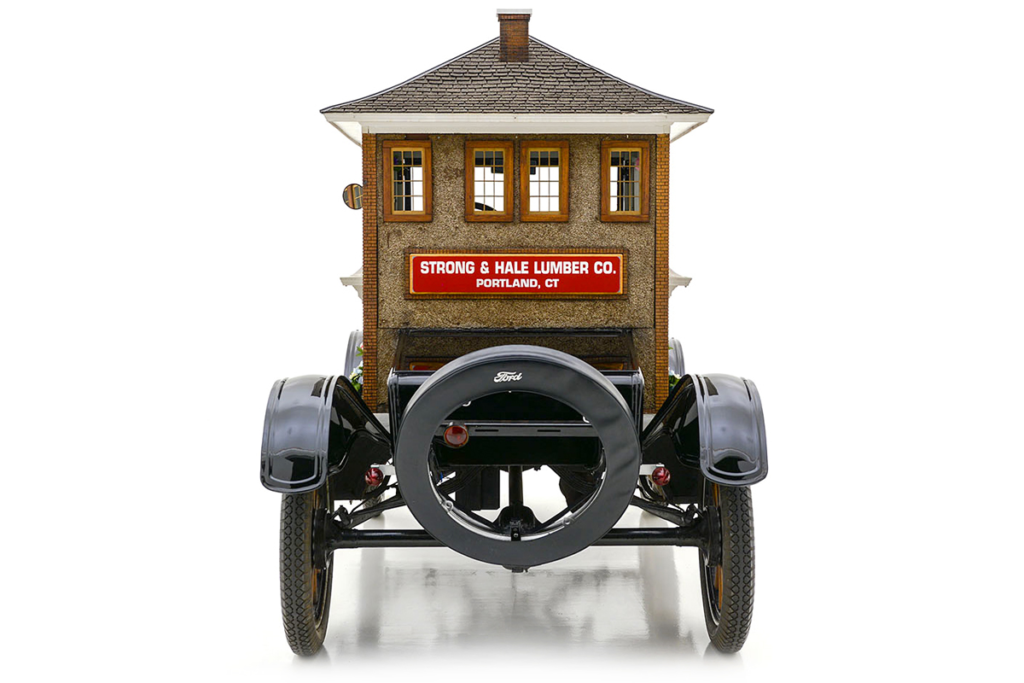
This particular Ford T didn’t appear in the book; the focus there was on genuine residential homes built on vehicle chassis. Here, however, we encounter a typical “admobile,” a concept many of which were constructed a century ago in various whimsical forms depending on the promoted product.
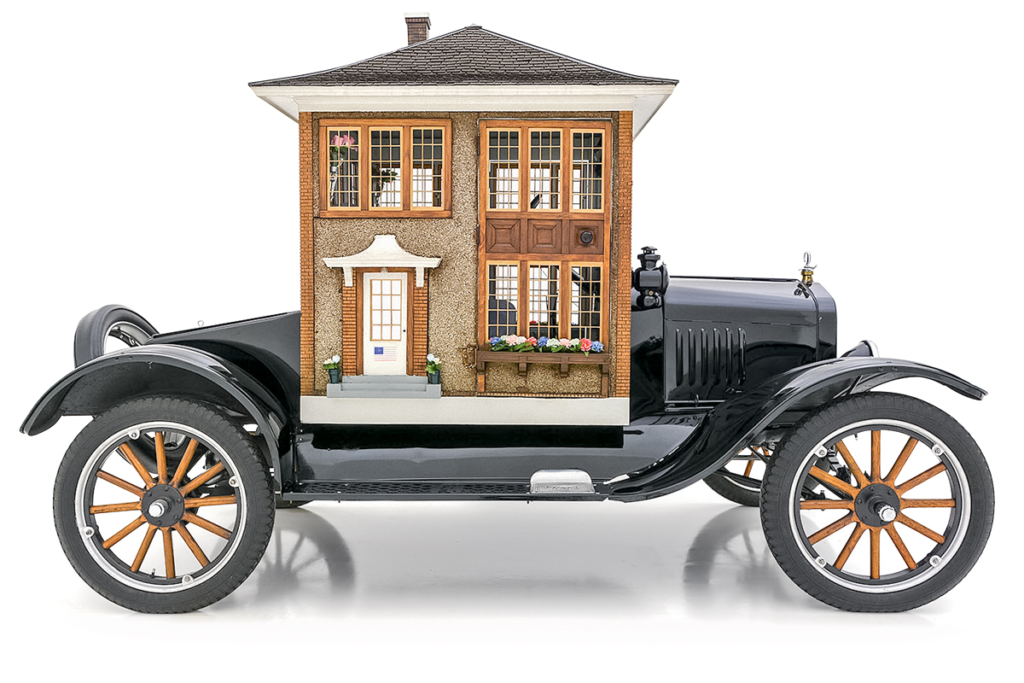
You need to enter the “house” not through the white illuminated porch, but by pulling the round handle to the left and above the headlight. Access to the interior is possible only from the sidewalk; the opposite door has no handle and opens only from the inside.
For example, a shoe repair and tailoring workshop once mounted an enormous, realistically crafted leather shoe on a car chassis. Beverage vendors, promoting both alcoholic and non-alcoholic products, attempted—with mixed success—to mold their promotional vehicles into the shapes of bottles. Budweiser brewers, eschewing small-scale efforts, extravagantly decorated two or three Cadillac cars as battleships, complete with anchors, cannons, flags, and lifebuoys. Over in Lithuania, a Chevrolet truck fashioned like a fish toured remote areas, distributing not fish, but fish-shaped soap samples to local villagers at its stops. British tobacconists Carreras Ltd., to promote their new Black Cat cigarette brand, deployed a pristine white vehicle with a driver and passengers dressed in sinister cat costumes, who continuously smoked those very cigarettes.
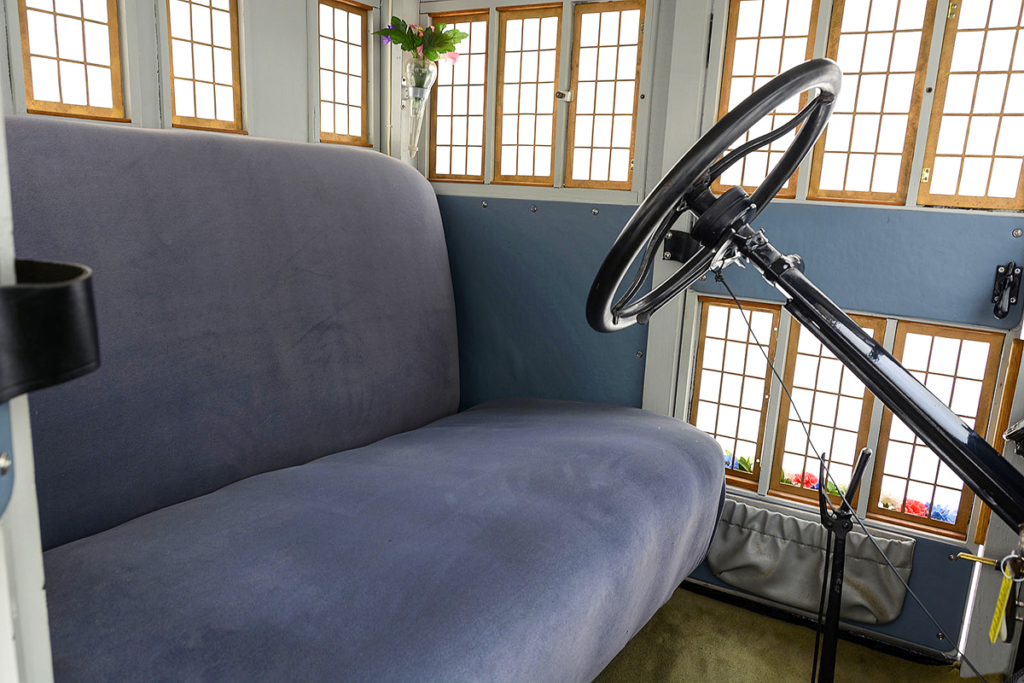
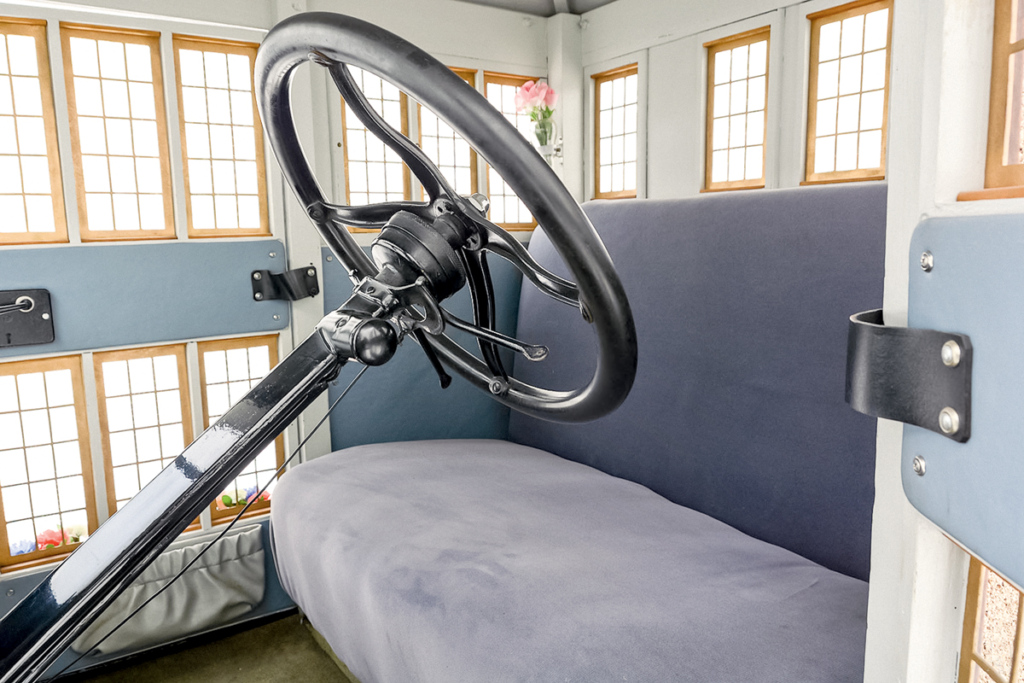
The salon is decorated with two very cute boutonnieres. The two-seater sofa, on the other hand, is quite standard.
In this instance, we see a relatively benign advertisement for a woodworking plant specializing in building materials for private home construction. Portland, Connecticut, is far from being a bustling metropolis, typifying “one-story America” where most buildings are constructed of wood. This continued even though the main local industry until 1936 was a quarry producing brownstone, which, despite its local prevalence, found its way to markets in New York, San Francisco, Boston, and even overseas to England and Canada. However, Portland’s residents showed a preference for traditional wooden houses, and it was for this audience that several mobile cottages—replacing the proverbial “chicken legs”—were built. These quaint mobile homes traveled the city streets and nearby areas, promoting building and repair materials.
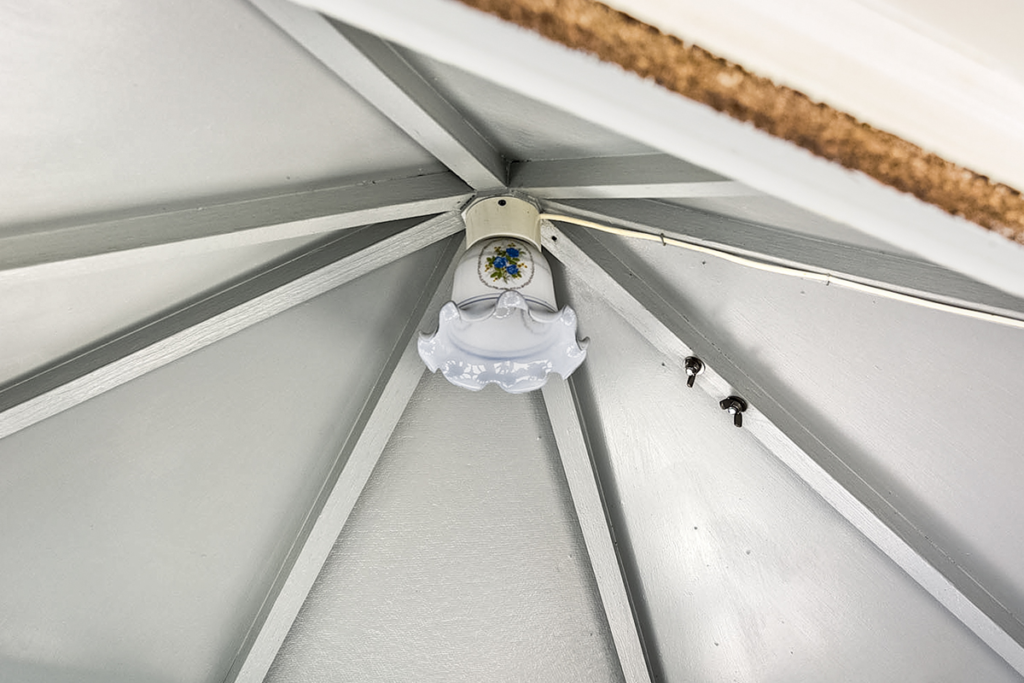
A flirty interior lighting shade. Two “lambs” to the right secure a decorative chimney pipe to the roof.
The visionary behind this marketing campaign was John Barry. During the period described—and for many years thereafter—he presided over Strong & Hale, whose logo adorns the rear wall of the “house.” Barry’s creativity was unmistakable: beyond the adorned Fords, he was known for a three-meter-high inscription on a brick wall stretching along the Connecticut River. This inscription, made in 1925 and reading “COME ON OVER,” seemingly beckoned migrants to settle in Portland. This inviting message has been preserved to this day, recently restored and the riverbank cleared of overgrown foliage that had obscured the letters.
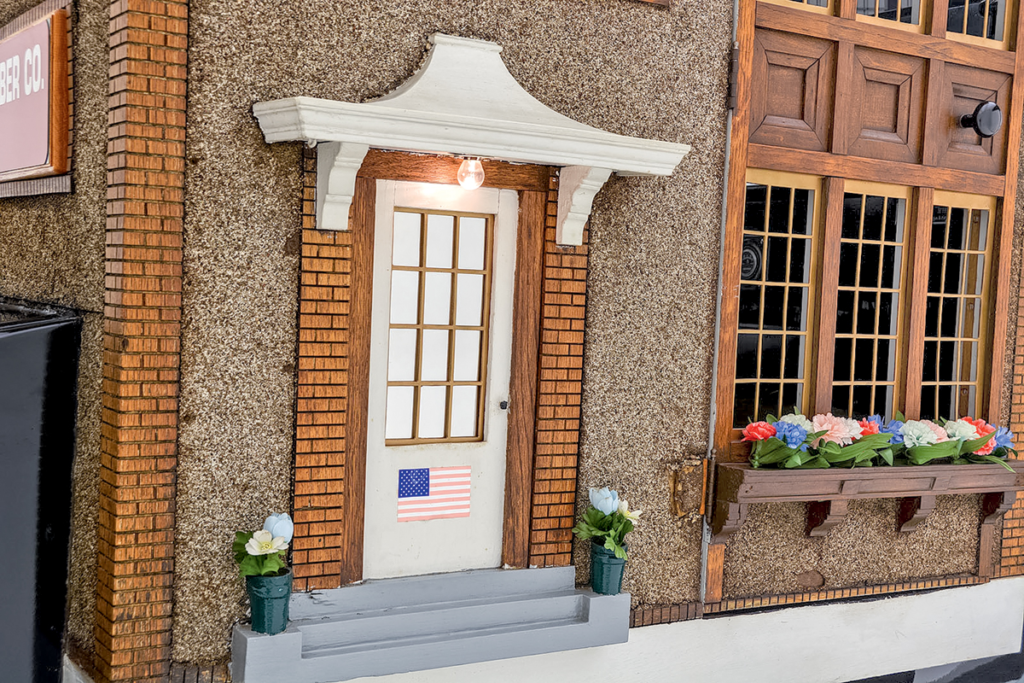
The “entrance group” is made with all the care of an architectural model – there is even a working lantern above the porch.
Barry speculated that newcomers would invariably build in the private sector and would thus require his lumber, beams, and various carpentry products like door and window frames. His assumptions were vindicated as Strong & Hale thrived through the Great Depression and World War II under his unyielding leadership. John Barry passed away quietly in 1958 at the age of eighty.
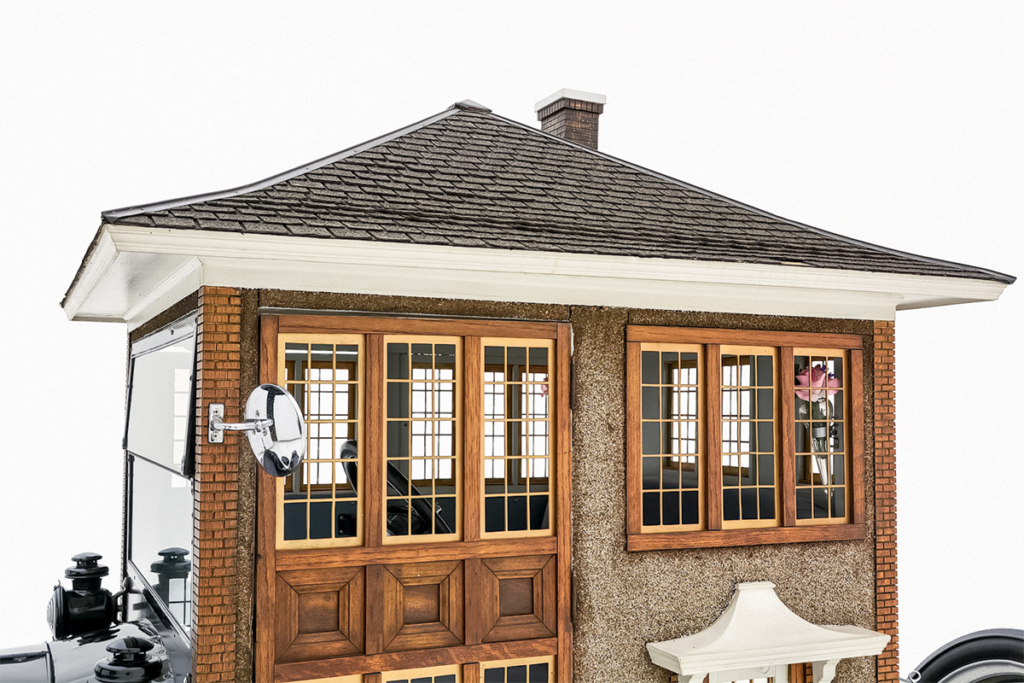
Three years posthumously, his company was acquired by a competitor who soon faced bankruptcy. Today, only the nostalgic inscription remains, now illuminated at night by spotlights, alongside the charming, ornate “gingerbread house.”
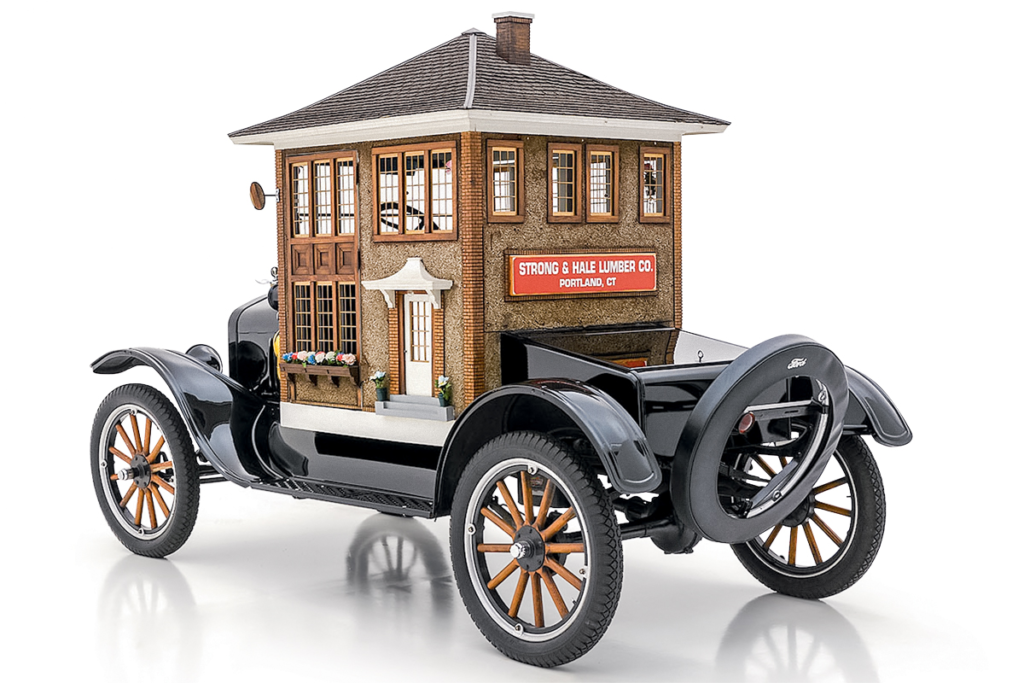

The roof of the “house” is covered with imitation tiles. The advertiser’s name is written in large letters – white on red – across the entire width of the back wall.
Photo: Sean Dugan, Hyman Ltd.
This is a translation. You can read the original article here: Пряничный домик Ford Model T 1922 года в рассказе Андрея Хрисанфова

Published February 20, 2025 • 4m to read

